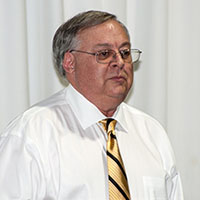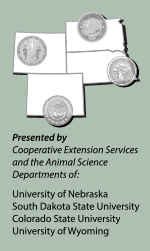Economist Jim Robb Shares Market Outlook
LOVELAND, Colo. (Nov. 17, 2015) — The cattle market has moved into an environment that is different from what cow-calf producers have experienced in recent years. However, it really isn’t unfamiliar territory. Speaking at the 24th semi-annual Range Beef Cow Symposium hosted Nov. 17-19 in Loveland, Colo., Livestock Market Information Center agricultural economist Jim Robb said cow folk should expect a return to the “more normal” seasonal price patterns.

“Net return to cow-calf producers is way down compared to 2014,” Jim Robb stated, “but it’s still the second-highest rate of return ever.”
Gone is the trend toward ever-higher calf prices, said Robb, reminding his audience that record-high prices of 2014 represented an anomaly. He expects prices to trend lower through 2018 at least, and probably through 2019. Prices are lower and costs are increasing, especially pasture rent. Robb said annual production costs are as much as $900 per cow.
“Net return to cow-calf producers is way down compared to 2014,” Robb stated, “but it’s still the second-highest rate of return ever.”
Commenting on beef demand, Robb said the U.S. economy is still growing, though modestly. Many other countries are in recession, however, including countries representing major U.S. beef export markets. Consequently export sales declined in 2015 and Robb sees little opportunity for growth in 2016. Global beef demand could rebound in 2017 and U.S. beef producers should be beneficiaries.
Within the U.S., per capita consumption of beef is also in decline, but Robb hastened to remind listeners that per capita consumption does not define beef demand. The price consumers are willing to pay for beef must be considered too. And beef buyers remain willing to pay relatively high prices.
“The really good news is that beef’s demand profile remains pretty solid,” Robb said.
Looking at competitive proteins, Robb said the chicken and pork industries each experienced surges in production during 2015. Production levels for both are expected to level off in 2016 and 2017.
Commenting on U.S. beef industry expansion, Robb cited July 2015 data indicating that breeding heifer retention was up 6% from the previous year, and the retention rate has increased since the report was issued.
“The cow-calf industry is expanding herd numbers at a fairly aggressive rate. That’s likely to continue through next year, then slow down due to the economic realities of expanded beef supply,” Robb stated.
The economist predicted cyclically eroding calf and feeder-cattle prices through 2018, with some volatility. He advised calf sellers to expect a return to seasonal price fluctuations and plan their marketing accordingly.
Editor’s Note: This summary was written under contract or by staff of the Angus Journal®, which retains the copyright. To request to reprint this article, contact Shauna Rose Hermel, editor, at 816-383-5270. PowerPoints are posted with permission of the presenter and may not be reproduced in whole or in part without the express permission of the presenter. Angus Journal claims copyright to this web site as presented. We welcome educational venues and cattlemen to link to this site as a service to their audience.
The Angus Journal's coverage of the event is made possible through collaboration with the event committee and sponsorship of LiveAuctions.tv. For questions about this site, or to notify us of broken links, click here. Look for additional coverage in the Angus Journal, the Angus Beef Bulletin, the Angus Journal Daily, the Angus Beef Bulletin EXTRA and Angus TV.


